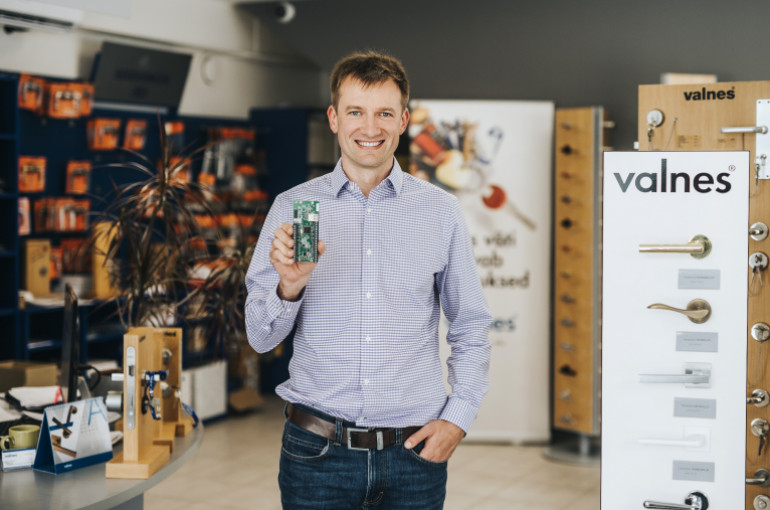WebLock smart lock has a new controller for mobile communications, which, thanks to Elisa’s low-frequency IoT Internet of Things, can also be installed in challenging locations that are not accessible by Wi-Fi or cable internet. The new controller now makes it easier to install WebLock on, for example, tennis courts or construction sites.

“In many facilities, it’s neither possible nor reasonable to provide communication for access systems via a cable or wireless network. Then the alternative is the narrowband IoT network, which is suitable for challenging locations,” said Tambet Kõrv, Valnes’ sales manager.
For example, to access the tennis court, the customer who made the reservation must enter a one-time smart lock code, which then opens the gate. “The Narrowband IoT network has created an opportunity to solve complex access problems with cloud locking, which would otherwise require complex cabling for the customer. Low-frequency devices transmit information quickly, and due to low energy consumption, they can also operate on batteries for a long time,” Kõrv added.
WebLock IoT smart lock is used in Smartpost Itella parcel houses
These smart locks will be used in Smartpost Itella parcel houses in Kose, Türi, and Paldiski, and in the near future in many other places where customers can open the parcel house door with the same code that they use to retrieve their parcel from the parcel machine.
According to Rauno Parras, Director of Itella Estonia’s parcel delivery services, smart locks have become part of the company’s “Carefully cared for” concept, due to which Smartpost Itella parcel machines are located only indoors. “Smart locks operating on the Internet of Things enable round-the-clock access to both luggage compartments and parcel machines with separate entrances, where parcels are protected from both extreme temperatures and excessive humidity,” Parras added.
In addition, similar smart locks are used, for example, at sports fields in Paide and Pärnu and at the gates of various construction sites to ensure fully automated access to the area.
Merli Üle, Head of Elisa’s business development unit, says that the use of energy-efficient IoT devices is on the rise. “The technology is suitable for use in everyday life, for example, for transmitting all kinds of readings – water, gas, and electricity, as well as in smoke detectors, security devices, smart city solutions, and logistics. Equipment operating at a low frequency is suitable for use in conditions where the volume of information transmission is not large, but it is important to ensure data transmission with the lowest possible energy consumption. ”
The Internet of Things IoT allows you to connect devices to the network in an energy-efficient way
The Internet of Things, or Narrowband IoT, allows devices to be connected to the network in an energy-efficient manner and to transmit data at low signal strengths. This means that they can be used successfully in locations such as underground basements or sewers that are out of reach of normal 3G and 4G coverage. Elisa opened the NB-IoT network in the autumn of 2018. The NB-IoT network is also an important step in the development of the 5G network, as the Internet of Things is one of the important applications for 5G technology.
The article was first published on Elisa’s website.